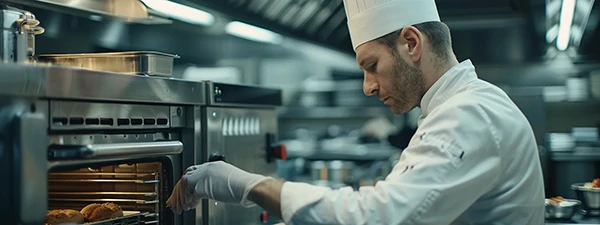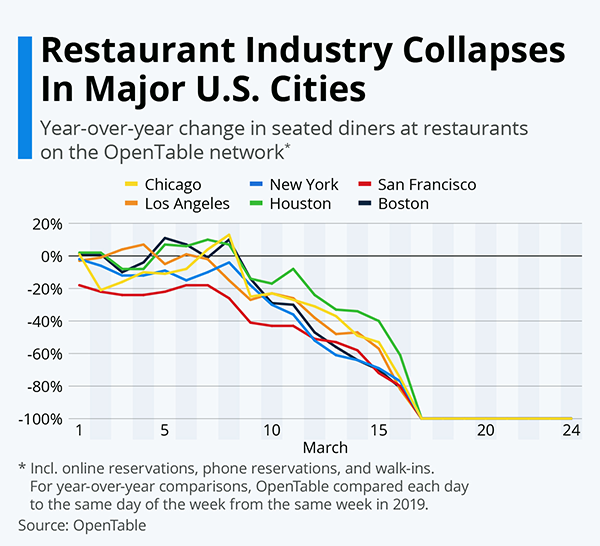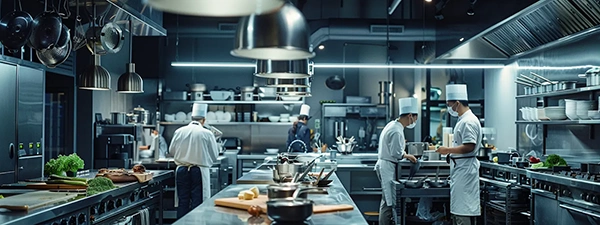Choosing the Right Restaurant Equipment
Jump To Key Section
- Understanding the Role of Quality and Durability in Restaurant Equipment Selection
- Balancing Budget and Performance for Long-Term Savings
- Restaurant Equipment: Space Efficiency Meets Kitchen Workflow
- Importance of Energy Efficiency in Commercial Kitchen Appliances
- Understanding the Role of Quality and Durability in Restaurant Equipment Selection
- Balancing Budget and Performance for Long-Term Savings
- Restaurant Equipment: Space Efficiency Meets Kitchen Workflow
- Importance of Energy Efficiency in Commercial Kitchen Appliances
- Navigating Warranty and Service Agreements for Restaurant Equipment
- Conclusion
When opening a new restaurant or refurbishing an existing one, one of the most critical investments revolves around selecting the right kitchen equipment. This choice can significantly impact both your cuisine’s quality and restaurant operations. Restaurant owners must weigh multiple factors such as durability, cost, efficiency, space utilization, and ongoing service requirements. Understanding the complexities of restaurant equipment selection is essential to creating a seamless, functional, and successful kitchen environment. Below, we explore essential considerations to guide you in making informed decisions.
Understanding the Role of Quality and Durability in Restaurant Equipment Selection

Choosing restaurant equipment isn’t just about finding the cheapest option—it’s about investing in durability and quality. High-grade materials mean fewer breakdowns, lower repair costs, and longer-lasting appliances, leading to substantial savings and less downtime over time. Though the initial investment can be high, it often reflects a sturdier design that can handle the demands of a busy kitchen, potentially saving on frequent replacements and repairs.
Durability also ensures consistent performance, crucial for maintaining food quality and customer satisfaction. Cheaper equipment may struggle under heavy use, leading to inconsistent results and potential damage to your restaurant’s reputation. Consulting with a restaurant supply store Los Angeles can provide valuable advice on reliable, high-quality equipment that will stand up to the rigors of a commercial kitchen.
Balancing Budget and Performance for Long-Term Savings
Choosing restaurant equipment is a critical decision for entrepreneurs, but it’s essential to balance cost with performance. Budget-friendly options may lead to frequent repairs or shorter lifespans, while high-performance equipment can potentially lower operating costs in the long run. Negotiating the best deal involves a comprehensive view of the equipment’s total cost of ownership, including energy consumption, maintenance fees, and potential downtime.
These costs can make cheaper models more expensive over time. Leasing or financing options can offer a balance between quality and affordability, allowing restaurants to spread out payments over time while enjoying the immediate use of modern, efficient equipment. Refurbished or lightly used equipment from suppliers can also be a cost-effective alternative, provided it’s of high quality and well-maintained.
Restaurant Equipment: Space Efficiency Meets Kitchen Workflow
Kitchen efficiency is crucial for a smooth and safe operation. Equipment selection should be based on individual performance and fit within the overall kitchen design. Multifunctional equipment can save space and maintain productivity while reducing clutter from overcrowding. Configuration should also allow for easy cleaning and maintenance.
A well-arranged kitchen with accessible appliances is essential for meeting health and safety standards. Kitchen equipment dealers can provide planning services to help arrange the space effectively, ensuring the heart of the restaurant is productive and enjoyable for the culinary team. By utilizing their expertise, kitchens can maintain a healthy and efficient operation.
Importance of Energy Efficiency in Commercial Kitchen Appliances
The restaurant business is said to be one of the most profitable businesses but what makes a restaurant successful? You might think it’s food, customer care, infrastructure, etc which is true. But another crucial component that makes a restaurant successful is the gadgets that are being used there.
The primary reason why restaurants go for high-end tools is because they want to provide good customer service. But choosing the right supplies is vital or it won’t be of any use and will only cost you money.
Considering this, this article will shed light on why picking the right restaurant staff is essential and what things need to be kept in mind before buying gear for your restaurant.
Stay with us till the end or you might make the wrong choice.
Understanding the Role of Quality and Durability in Restaurant Equipment Selection
Everyone says quality and durability are the key when it comes to any appliance selection and restaurant equipment is no exception. But why is quality and durability necessary? Take a look at why purchasing best quality and durability hardware is beneficial:
Quality
Quality tools are important for several reasons. To start, quality gears can give you better performance. They will make sure that all your requirements are being met and even during busy hours these tools will make sure that everything is done smoothly.
These tools can also be very energy efficient saving a lot of bucks in electricity. Quality tools offer you security and prevent malfunctioning or any type of accident that might occur while operating or using any of the gears.
And most importantly quality hardware like a good oven, grill, microwaves, etc will maintain the quality of your food leading to great customer satisfaction. It must be obvious now why quality equipment is a must right?
Durability
Durability is as crucial as quality. A durable product will work in the long run and will save you a lot of money, unlike nondurable utensils which are cheaper but won’t last long.
Durable resources don’t need constant maintenance so you can carry out your duties unhindered without worrying about the equipment. You can say that they won’t turn their backs on you during rush hours.
Durable tools maintain their overall quality and can be resold easily and you can get good money out of them if you want new equipment or need to sell the old ones.
Balancing Budget and Performance for Long-Term Savings

The budget is going to be tight because not only do you have to buy new restaurant equipment but also invest in other things like hiring staff, creating a good interior, buying chairs, tables, etc. And you can’t just put everything on your equipment.
So what you have to do is buy equipment that is within your budget and offers you great durability and quality. You should check out this amazing restaurant equipment store in Los Angeles.
This store is called Restaurant Warehouse and they have a wide range of tools and gears. They offer several services like fast and free delivery, tested and approved products, and more.
This store has something for everyone and is a one-stop shop for all your needs. Manage your budget, don’t spend more than needed because you have to stick in this business for the long run and savings will help you in that. So save money at any given opportunity.
Restaurant Equipment: Space Efficiency Meets Kitchen Workflow
Only buying the supplies is not enough; the way you arrange them also plays a key role. A well-organized kitchen with great equipment selection will be able to maintain workflow and work will be done faster and more smoothly.
But if you don’t make changes and organize things in your kitchen there will be a lot of disturbance and mistakes. Go for multi-purpose tools that will save you space and money.
Create separate sections like food preparation, cooking, plating and divide the equipment in each section, and make sure that the required gears are near or attached to the sections so it’ll be easier and faster to operate.
Avoid just putting gadgets anywhere you think they fit. Your placement should be logical and train your staff well so that they can also use the amenities to its fullest potential.
Trivia
Given how equipment is treated and maintained it can affect its lifespan!
Importance of Energy Efficiency in Commercial Kitchen Appliances
We hear every day that using energy-efficiency tools is crucial because it helps save our planet but is that all it does? Using energy-efficient stuff will save you money because they will consume less electricity.
Not only that, customers also get attracted more towards businesses that are energy efficient and it creates a good image of your restaurant. There are several government programs that offer rebates to businesses that are being considerate towards the environment.
Energy-efficient gears also have larger life spans and are good at managing heat. These types of gadgets are also easier to operate and manage. And such appliances are more advanced.
Navigating Warranty and Service Agreements for Restaurant Equipment

Whenever you are buying any electronics you make sure to check about its warranty and service agreements and this is because you want to make sure if anything goes wrong your pocket will be safe.
Buying good supplies and tools for your restaurant with a great warranty will give you several benefits. For example, if anything happens to your accessories in the given warranty period you will get it fixed for free or might even get a new one.
A service agreement will offer you free maintenance and time-to-time inception making sure that your tools and gears are working perfectly. You can get the warranty claim and this will be done by your service provider.
Always keep in mind that you buy the best warranty and service agreement equipment and get products from companies that can offer you an extended warranty and service agreement.
Conclusion
By now you must have realized that investing in the right gear can turn your business around. It can also cut down your business if you don’t make the right choices while buying your requirements.
Cheaper is never better and you want to buy the best thing possible in your budget. Energy efficiency is a must and so is the warranty and service agreement. If you’ll keep other points in your mind while buying new tools you will only make the right decisions.








